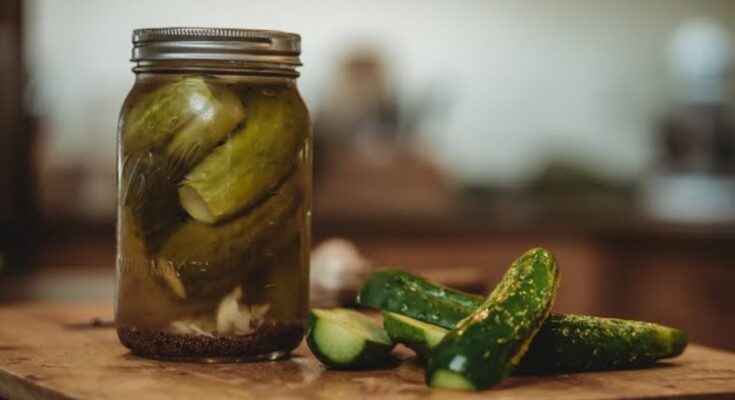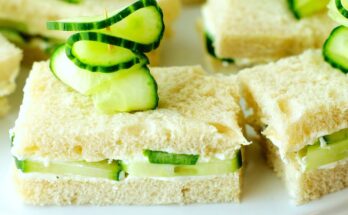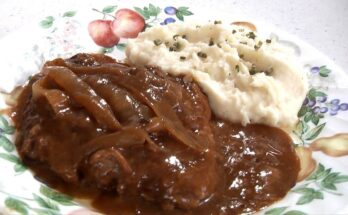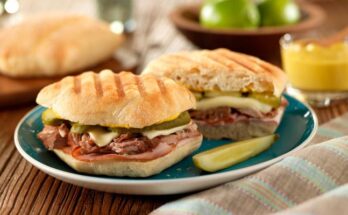Cucumber Pickle Recipe: Pickles have been a beloved food for centuries, adding crunch, tang, and zest to almost every meal. Among all the varieties, cucumber pickles remain the classic favorite. Whether you love them on burgers, sandwiches, or straight from the jar, learning how to make your own at home is not only rewarding but also surprisingly easy.
This guide will walk you through everything you need to know about making cucumber pickles—from gathering ingredients to preparing them step by step. By the end, you’ll be confident enough to whip up a batch that rivals any store-bought jar.
So grab some fresh cucumbers, roll up your sleeves, and let’s dive into the world of homemade cucumber pickles.
Introduction to Cucumber Pickles
Cucumber pickles aren’t just a crunchy snack—they’re a tradition passed down through generations. Across cultures, pickling has been used as a way to preserve vegetables and enhance flavors. From spicy dill pickles in the U.S. to tangy achar in South Asia, every region has its own twist on this timeless delicacy.
Why Homemade Pickles Are the Best
Let’s be real—nothing beats homemade. When you make pickles at home, you control every ingredient. You decide how tangy, spicy, or sweet your pickles will be. No more hidden preservatives, artificial colors, or excess sodium. Plus, homemade pickles taste fresher because you’re using cucumbers picked at their peak.
Imagine opening your fridge to a jar of crisp, flavorful pickles that you made yourself. It’s not just food—it’s an experience. You’ll find that once you start, you’ll never want to go back to store-bought again.
The History and Popularity of Pickling
Pickling is one of the oldest methods of food preservation. Records show that cucumbers were being pickled in Mesopotamia as far back as 2400 BCE. Over time, the practice spread across the globe, adapting to local flavors and spices.
In modern times, pickles have become more than just a preservation technique. They’re a culinary trend, with artisanal pickle shops popping up in cities worldwide. From garlic-infused spears to jalapeño-studded slices, pickles are loved for their ability to balance flavors in dishes.
Ingredients You’ll Need for Cucumber Pickles
Before you begin, let’s go over the star players in this recipe. A good pickle starts with quality ingredients, and the right balance of flavors makes all the difference.
Fresh Cucumbers – The Star Ingredient
Your cucumbers are the foundation of your pickles. For best results, use pickling cucumbers, which are smaller, firmer, and less watery than the ones you typically find in salads. Their thin skin allows the brine to seep in quickly, giving you that perfect crunch.
Pro tip: Always choose cucumbers that are bright green, free from blemishes, and firm to the touch. Soft cucumbers will lead to soggy pickles.
Essential Pickling Spices and Herbs
Spices are what give pickles their signature taste. Here’s a basic spice mix you can’t go wrong with:
- Dill seeds or fresh dill sprigs – the classic flavor
- Mustard seeds – add a nutty, tangy depth
- Black peppercorns – for a mild kick
- Garlic cloves – sharp, aromatic, and irresistible
These spices can be adjusted depending on your personal preference. Some people love adding red chili flakes for heat, while others prefer coriander seeds for an earthy note.
Vinegar, Salt, and Sugar – The Flavor Balancers
The holy trinity of pickling is vinegar, salt, and sugar. Each has its role:
- Vinegar brings the tang. White vinegar is the most common, but apple cider vinegar adds a fruity touch.
- Salt enhances flavor and preserves the cucumbers. Use pickling or kosher salt, as regular table salt can cloud the brine.
- Sugar balances acidity and softens the sharpness of vinegar.
Getting the balance right is crucial. Too much vinegar, and your pickles will be overly sour. Too much sugar, and they’ll taste more like dessert.
Optional Add-Ins for Extra Flavor
Want to get creative? Try adding these extras:
- Sliced onions for sweetness
- Jalapeños for heat
- Bay leaves for aroma
- Horseradish for bite
Pickling is highly customizable, so don’t be afraid to experiment until you find your signature blend.
Kitchen Tools and Equipment Required
You don’t need a professional kitchen to make great pickles, but a few essential tools will make the process smoother.
Mason Jars and Lids
Glass mason jars are the traditional choice for pickling. They’re airtight, reusable, and durable. Choose jars with tight-sealing lids to prevent spoilage. Wide-mouth jars are especially handy when packing whole cucumbers.
Boiling Pot and Funnel
If you’re planning to can your pickles for long-term storage, you’ll need a large boiling pot for sterilizing jars. A funnel also comes in handy to pour brine without spills.
Measuring Tools and Spoons
Accuracy matters in pickling. Use proper measuring cups and spoons to ensure the right vinegar-to-water ratio. This not only affects taste but also food safety.
Preparing Cucumbers for Pickling
Getting your cucumbers ready is just as important as making the brine. Preparation ensures your pickles come out crunchy and flavorful every time.
Choosing the Right Cucumbers
As mentioned, pickling cucumbers are the best choice. They’re typically shorter (3–5 inches long) and have a bumpy exterior. Avoid English or slicing cucumbers, as their thin skin and high water content make them prone to sogginess.
Washing and Cutting Techniques
Thoroughly wash your cucumbers under cold running water to remove dirt and bacteria. Trim off the blossom end (the side opposite the stem), as it contains enzymes that can make pickles soft.
Cutting styles depend on preference:
- Spears for snacking
- Slices for sandwiches
- Whole for traditional dill pickles
Tips for Keeping Pickles Crunchy
Nobody likes a limp pickle. To maintain that satisfying crunch:
- Soak cucumbers in ice water for a few hours before pickling.
- Add a grape leaf or black tea bag to the jar—the tannins help keep cucumbers firm.
- Don’t skip trimming the blossom end.
Step-by-Step Guide to Making Cucumber Pickles
Now that your ingredients and cucumbers are ready, let’s put everything together.
Step 1 – Sterilizing the Jars
Sterilization is non-negotiable if you want safe, long-lasting pickles. Place jars and lids in a large pot of boiling water for about 10 minutes. Let them air dry on a clean towel before filling.
Step 2 – Preparing the Brine
In a saucepan, combine vinegar, water, salt, and sugar. Bring the mixture to a boil, stirring until the salt and sugar dissolve completely. Once done, remove from heat and let it cool slightly.
Step 3 – Packing the Jars with Cucumbers
This is where the fun begins. Take your sterilized jars and start filling them with cucumbers. Whether you’re using whole cucumbers, spears, or slices, make sure to pack them tightly without crushing them. Leaving too much empty space can lead to uneven pickling.
Pro tip: Place the cucumbers vertically in the jar if using spears or whole cucumbers—it looks beautiful and makes the jar easier to fill. If using slices, layer them evenly so the brine can flow through all the pieces.
Don’t forget to leave about half an inch of headspace at the top of the jar. This ensures proper sealing and prevents overflow when you add the brine.
Step 4 – Adding Spices and Herbs
Here’s where your pickles get their unique personality. Drop in your garlic cloves, dill sprigs, mustard seeds, and peppercorns. The order doesn’t matter much, but distributing the spices evenly between jars will ensure consistent flavor.
Want a spicy kick? Add red pepper flakes or a slice of jalapeño to the mix. If you like bold aromas, tuck in a bay leaf or a sprig of thyme. The beauty of pickling is that it’s completely customizable—no two jars have to be the same.
Remember, a little goes a long way. Overloading spices can overpower the cucumbers and throw off the balance.
Step 5 – Pouring the Brine and Sealing
Carefully pour the hot brine into each jar using a funnel. Make sure the cucumbers are completely submerged, as any exposed pieces can spoil. Use a clean spoon or spatula to gently press down the cucumbers and release air bubbles.
Wipe the rims of the jars with a damp cloth to remove any brine residue. Then, place the lids on securely. For refrigerator pickles, a tight twist is enough. For canned pickles, you’ll need to follow the proper canning method to ensure a safe seal.
Step 6 – Canning or Refrigeration Process
You now have two options, depending on how long you want to store your pickles:
Refrigerator Pickles
- Let the jars cool, then place them in the fridge.
- They’ll be ready to eat in 24–48 hours but taste even better after a week.
- Shelf life: about 2–3 months in the refrigerator.
Canned Pickles (Long-Term Storage)
- Place the sealed jars in a boiling water bath for 10–15 minutes.
- Remove and let them cool at room temperature.
- Shelf life: up to a year in a cool, dark place.
Both methods work beautifully, but if you’re new to pickling, refrigerator pickles are a simple and fuss-free way to start.
Storage and Shelf Life of Cucumber Pickles
One of the best parts about making pickles is that you can enjoy them for months. However, proper storage is key to keeping them safe and flavorful.
Refrigerator Storage
If you’ve chosen the refrigerator method, always keep the jars chilled. Pickles stored in the fridge will stay crunchy and fresh for 2–3 months. Just make sure the cucumbers are always submerged in brine. If the liquid level drops, top it off with a bit of vinegar-water mix.
Canned Pickle Storage
Canned pickles are shelf-stable, meaning they can be kept in a pantry or cupboard for up to a year. Once opened, though, they must be refrigerated and consumed within a month.
Signs Your Pickles Have Gone Bad
Even with proper care, sometimes pickles spoil. Watch out for these warning signs:
- Cloudy or slimy brine
- Mold on the surface
- An unpleasant odor
- Mushy texture
When in doubt, throw them out. Food safety always comes first.
Different Variations of Cucumber Pickles
Cucumber pickles aren’t one-size-fits-all. Depending on your taste buds, you can experiment with countless variations.
Classic Dill Pickles
The most popular style, featuring dill weed, garlic, and vinegar. Crisp, tangy, and perfect for burgers or hot dogs.
Bread and Butter Pickles
These are sweeter, with added sugar and often onions. They’re milder in flavor and pair beautifully with sandwiches.
Spicy Pickles
Add red chili flakes, jalapeños, or even habaneros for a fiery twist. Great for adventurous eaters who like a kick.
Fermented Pickles
Instead of vinegar, these rely on natural fermentation with salt brine. The result is a tangy, probiotic-rich pickle, similar to traditional kosher dills.
Gourmet Pickles
Want to impress? Try adding unusual flavors like turmeric, ginger, or even whiskey. The possibilities are endless!
Troubleshooting Common Pickling Problems
Even with careful preparation, things don’t always go as planned. Don’t worry—most pickle problems are easy to fix once you know what went wrong.
Why Are My Pickles Soft Instead of Crunchy?
Soft pickles are one of the most common issues. This usually happens when:
- You used the wrong cucumbers (slicing cucumbers instead of pickling ones).
- You didn’t trim off the blossom end, which contains enzymes that soften cucumbers.
- The brine wasn’t strong enough, or the cucumbers weren’t submerged fully.
Fix: Always use firm pickling cucumbers, trim properly, and keep them submerged in brine. Adding grape leaves or tea leaves can also help maintain crunch.
Why Is My Brine Cloudy?
Cloudy brine may look suspicious, but it’s not always bad. In fermented pickles, cloudiness is normal and comes from natural lactic acid bacteria. However, in vinegar-based pickles, cloudiness can mean:
- You used table salt (with anti-caking agents).
- Spoilage bacteria are present.
Fix: Use kosher or pickling salt only. If the brine smells bad or the pickles look slimy, toss them out.
Why Do My Pickles Taste Too Salty or Too Sour?
Taste imbalances happen when the vinegar, water, salt, and sugar ratios aren’t measured properly.
Fix: Always stick to tested recipes, and use proper measuring cups. If pickles are too salty, you can rinse them lightly before eating. If they’re too sour, add a touch of sugar to the brine next time.
Serving Ideas for Cucumber Pickles
Pickles are more than just a side—they can be the star of many dishes. Here are some tasty ways to use your homemade pickles:
With Burgers and Sandwiches
A crunchy dill pickle on a juicy burger or layered in a deli sandwich adds the perfect tangy contrast.
As a Snack
Eat them straight out of the jar! Pair with cheese cubes, crackers, or cold cuts for a quick snack platter.
In Salads
Chopped pickles add zing to potato salad, pasta salad, or even coleslaw.
As a Garnish
Use pickle spears as a garnish for cocktails like Bloody Marys. They’re a fun, flavorful twist compared to traditional celery stalks.
In Recipes
From tartar sauce to pickle dip, there are countless recipes that call for pickles. You can even chop them into deviled eggs for a tangy surprise.
Health Benefits of Eating Cucumber Pickles
Pickles aren’t just tasty—they also come with surprising health benefits (when eaten in moderation).
Rich in Antioxidants
Cucumbers and spices like garlic and dill contain antioxidants that help fight free radicals in your body.
Good for Digestion
Fermented pickles (not vinegar-based) contain probiotics, which promote gut health and improve digestion.
Low in Calories
Pickles are low in calories, making them a guilt-free snack. One spear usually has fewer than 10 calories!
Source of Vitamins and Minerals
Pickles provide small amounts of vitamin K, vitamin A, and potassium, all essential for overall health.
Note: Pickles are high in sodium due to the brine. If you’re watching your salt intake, enjoy them in moderation.
Tips for Perfect Pickles Every Time
After making a few batches, you’ll notice that small details can make a big difference. Here are some tips to guarantee success:
- Always use fresh, firm cucumbers.
- Measure ingredients precisely—don’t eyeball vinegar, salt, or sugar.
- Don’t skip sterilizing your jars; it’s key for safety and shelf life.
- Be patient! Pickles taste best after at least a few days of resting.
- Experiment with flavors—pickling is as much art as science.
FAQs about Cucumber Pickle Recipe
Q1: How long should I wait before eating homemade pickles?
A: Refrigerator pickles are ready in 24–48 hours, but they taste best after a week.
Q2: Can I reuse pickle brine?
A: You can use leftover brine to flavor veggies like carrots or onions, but don’t reuse it for cucumbers—it won’t preserve them safely.
Q3: What’s the difference between fermented and vinegar pickles?
A: Fermented pickles rely on natural bacteria to create tanginess, while vinegar pickles use an acidic brine. Fermented ones contain probiotics.
Q4: Do I need to peel cucumbers before pickling?
A: No! The skin adds crunch and flavor. Just wash them thoroughly.
Q5: How can I make my pickles spicier?
A: Add sliced jalapeños, red pepper flakes, or even a dried chili to your jars for a fiery kick.
Conclusion
Making cucumber pickles at home is easier than most people think. With just a handful of ingredients and some patience, you can create jars of tangy, crunchy goodness that rival anything from the store. Whether you prefer classic dill, sweet bread-and-butter, or spicy varieties, the process is simple, customizable, and endlessly rewarding.
Next time you have fresh cucumbers on hand, don’t let them go to waste—pickle them! Not only will you have a delicious snack ready anytime, but you’ll also be carrying forward a centuries-old culinary tradition.



